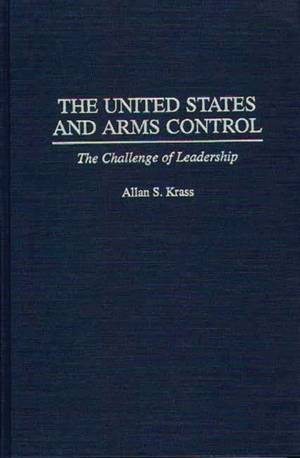
Door een staking bij bpost kan je online bestelling op dit moment iets langer onderweg zijn dan voorzien. Dringend iets nodig? Onze winkels ontvangen jou met open armen!
- Afhalen na 1 uur in een winkel met voorraad
- Gratis thuislevering in België vanaf € 30
- Ruim aanbod met 7 miljoen producten
Door een staking bij bpost kan je online bestelling op dit moment iets langer onderweg zijn dan voorzien. Dringend iets nodig? Onze winkels ontvangen jou met open armen!
- Afhalen na 1 uur in een winkel met voorraad
- Gratis thuislevering in België vanaf € 30
- Ruim aanbod met 7 miljoen producten
Zoeken
Omschrijving
The United States has committed itself to an unprecedented number and variety of arms control and nonproliferation obligations in the past decade. At least ten major new agreements have been signed since 1986, and some of them have now been in force for several years. After a brief review of Cold War arms control and the lessons to be learned from it, the book surveys the commitments the United States has made during the past decade across the full spectrum of arms control, including nuclear, conventional, chemical, and biological weapons. It describes the bureaucratic structure the United States has created to implement its own commitments and to verify that other countries are complying with theirs. The book then analyzes the costs and benefits of the new regimes, the persistent problems encountered in managing them, and the causes and appropriate responses to incidents of noncompliance. It concludes with an argument for continued U.S. leadership in international arms control.
Specificaties
Betrokkenen
- Auteur(s):
- Uitgeverij:
Inhoud
- Aantal bladzijden:
- 232
- Taal:
- Engels
- Reeks:
Eigenschappen
- Productcode (EAN):
- 9780275959470
- Verschijningsdatum:
- 30/08/1997
- Uitvoering:
- Hardcover
- Formaat:
- Genaaid
- Afmetingen:
- 163 mm x 243 mm
- Gewicht:
- 530 g

Alleen bij Standaard Boekhandel
+ 288 punten op je klantenkaart van Standaard Boekhandel
Beoordelingen
We publiceren alleen reviews die voldoen aan de voorwaarden voor reviews. Bekijk onze voorwaarden voor reviews.











